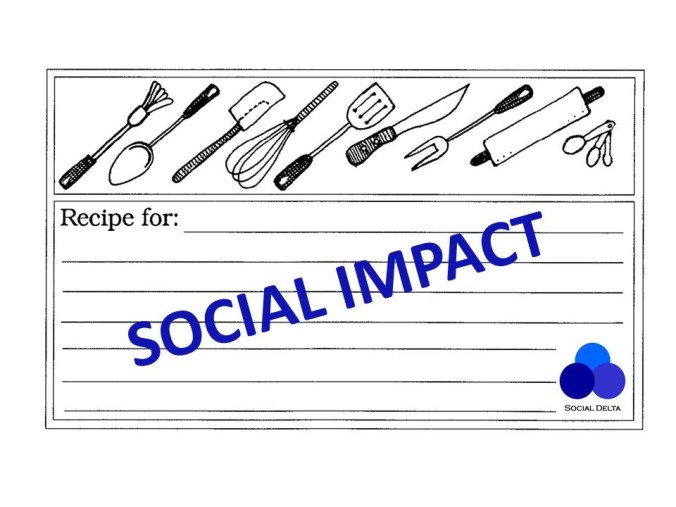Many social enterprises with cultural missions (museums, galleries, recreational facilities, or ongoing or travelling events) struggle with how to set admission prices, and many revert to a “jar at the door” asking for donations.
Spoiler alert: charge admission.
I firmly recommend to any social enterprise that they set prices (including admission fees) based upon a sound understanding of their cost structure, and how much they need to charge their guests they expect to visit their location to attempt to cover these costs. This recommendation is borne out of experience and logic for any business. For cultural social enterprises, they may not cover all of their costs, but charging an admission fee—over an admission-by-donation strategy—has many benefits described below:
Admission fees are professional
In 1st century BC, Publilius Syrus wrote: “Something is only worth what
someone is willing to pay for it”. This is perhaps a bit simplistic, as
the truth is that a sustainable price represents the point where both the
customer and the business both are getting a good deal (or at least neither is getting a raw deal). Charging visitors for
admission simply states to your customer that you have spent money to create an
experience for them, and they need to spend money to enjoy the experience. All
agree that good experiences cost money. Now there is nothing left to do other
than haggle over price.
Free, however, suggest that the museum doesn’t pay for, or doesn’t care
about, or perhaps doesn’t even know the costs of their service. The assumption
by the consumer, paradoxically, is that the experience is likely not going to
be very good. In the bizarre world of consumer expectations, free stuff is low
quality and useless, and expensive stuff is better quality or valuable. (just
think of drinking water or wrapping paper) Charging admission says that you are
professional and that your business value proposition is important and
valuable.
Admission fees do not decrease
attendance
If you lose 5% of your customers due to the application of an admission fee,
that would be a shame, but studies show that admission prices don’t actually
decrease attendance. Some even argue that museums and cultural attractions actually
get more customers by charging a “professional” amount (see above). A study
in 2015 of 98000 adults in the US actually concluded that “in
most instances, audiences indicate greater intentions to visit organizations
that charge more than $20 for an adult admission than those that are free.”
The decision to visit a museum, gallery or event is affected by many factors and price plays a smaller role than most believe. Family history, geographic proximity (especially for travelers), hobbies and interests, marketing and promotions, available time, or availability of alternatives all play a pivotal role in attendance numbers for cultural social enterprises. After all, if you travel to Paris, do you really care what the price of admission is to the Louvre? You are already committed: once you’ve paid for the flight, hotel, meals, and your time…the admission could be 50 Euros before you would even blink.
Admission fees will generate more
total revenue than donations
If 100 people come to your attraction and you charge them $10 to get in,
you’ll earn $1000 in gross revenue. If 100 people come and are asked to make a
suggested donation, you’ll be lucky to get $500 in revenue. It varies by event,
attraction, demographics, region, and product, of course, but in every study
I’ve read where a “suggested donation amount” is posted, the actual donation is
25-50 percent of the posted amount, even when the posted amount is
significantly less than what the market would bear. This is lost revenue and
lost opportunity for your cultural business.
There are tricks to try to increase donation amounts. Some have tried
offering a choice of recommended amounts (and the results show that most people
choose the median recommendation or less). Some have considered a sign saying
that other patrons have historically given a certain amount (and this helps to
bump up the average donation slightly).
One particularly creative example
is from the The Contemporary Arts Museum of Houston (CAMH), which doesn’t
charge admission and prefers to accept donations. They put out a donation box
old-school style with a sign on it that reads: “Average cost per visit $22. Your admission charge $0. Suggested
donation $5” This approach increased their average donation slightly,
because it listed a factual cost (calculated from the previous year’s
financials) as a benchmark allowing visitors to confer value upon the
experience they are about to have. This is a clever approach, but still an
approach that generated less revenue than a straight $10 admission fee.
Your gift shop benefits
Most cultural social enterprises have an opportunity for a secondary spend.
What this means is that your visitors to the main attraction will (of course)
be encouraged to visit the gift shop, the ice-cream stand, the café, or the
special exhibit. It turns out that visitors who don’t pay for admission are
also far less likely to spend money in other parts of your establishment. A
good example comes from Cedar Rapids, which offers free admission for about two
months a year to their Museum of Art. Their attendance during those promotions
(contrary to most data) does increase, but as noted
by the business owner “the average
donation in the donation box remains in the range of 25-35 cents per person and
the average amount spent by those who enter the gift shop plummets from about
$13 to about $3.”
You can track and plan marketing and
promotions
If your customers have to pay to get in, you can get more information from
them that can help document your marketing success or guide your future
promotions efforts. Where do they live? How many people are in their party? Did
they question the price? Did they request a family rate? Did they use VISA, MC
or AMEX? How did they hear about you? Did they use a coupon or a promotion
through their hotel?
The act of collecting a fee allows for an interaction (either automatically
by the point of sale software, or through conversation). Every time a business
can interact with a client, it is an opportunity for improving customer
service, retention, and renewal and another way to inform future marketing
efforts. A donation box is normally anonymous (to protect the dignity of the
donor), and thus represents a lost opportunity for business development.
Increased social outcomes
Although my data on length of visit of paying vs non-paying customers is largely apocryphal, visitors who have paid to get in to your exhibit are likely to “savour the experience” just a bit more, in order to get their money’s worth. In an art gallery this is often the experience for special exhibits; visitors will pay to see the Monet exhibit, for example, and even if their fee allows them free entrance to the regular collection, many will either forego the gallery’s resident collection, or they will rush through these works of art after hours of peering at the “valuable” art in the special exhibit.
Most cultural social enterprises want people to learn, enjoy, and engage in
the mission of the business. Knowing that your customers will read every
plaque, pause at every display, and ruminate on how this affects them is
certainly a goal equal to or more valuable than the mere volume of visitors.
Admission fees force good business
practices
It is true that if you charge a fee, your customers will expect more from
your business. Many museums and cultural exhibits are struggling to maintain
visitation levels in a world of virtual reality, internet museums, and so many
fantastic blogs and websites devoted to capturing and curating history and
culture. It is important for all cultural businesses to strive to find new ways
to capture the attention of new audiences. Not only will admission fees
generate revenue to help run the business, it will also force your board,
staff, volunteers and content curators to work diligently to create excellent
experiences for customers. There is little incentive to update, change, review,
digitize or improve your collection or experience if the customer is not
demanding it.
You can still be accessible
In my experience, the key rationale made to solicit voluntary contributions
is to allow everyone to enjoy the museum, installation or activity. “Maximize
accessibility” is the mantra. After all, if the mission of the business is to
promote culture, then it may seem logical to not create any financial barrier
to entry. For fully funded organizations, I accept that “admission by donation”
will be fine, as the business costs will be covered by grants or sponsorships. However,
the fully funded cultural social enterprise is a unicorn; people claim they
exist, but I’ve never seen one.
It is possible to offer bursaries, school programming, or discounted days
for those who are unable to pay. There are many creative examples of dignified
programs and promotions that can help those for whom a small admission fee
still is a concern.
Fees are guaranteed. Donations are
fickle.
The other argument I often hear is that donations do not have a ceiling; that is to say, a donation request might yield a $1000 contribution, and surely that possibility makes an “entrance by donation” strategy worth considering. When faced with this assertion, I normally ask how many large gifts has the business ever received in this manner, and were they able to properly receipt, track and cultivate that donor? More often than not, there is no evidence that such a gift had ever been received, nor is it truly likely to be expected through that mechanism.
The truth is that even if there were to be a “huge gift” in the donation jar, perhaps once in a year, by fluke (every fundraiser knows that “people give to people,” after all), it is likely that the lost opportunity for all those who chose not to donate would exceed the value of the larger one-off gift.
To conclude, it is overwhelmingly clear to me that charging a fee is the right approach for all cultural social enterprises.
The downside risks (fear of decreased attendance or restrictions for those in poverty) are easily managed with creative pricing approaches if it is even necessary, while the benefits of an admission fee are significant. Under set admission fees, revenue is more stable, predictable and lucrative, and the organization is more professional and effective. Fees don’t need to be exorbitant, but they should at least reflect the costs of the business that have not been covered by donations, endowments, or sponsorships.
Regardless of the size of your business, charging an admission will help your social enterprise remain in business, impress and engage your customers, and most effectively promote your cultural or social mission.


